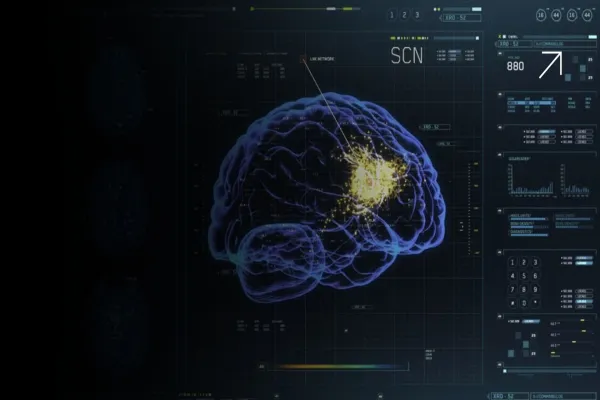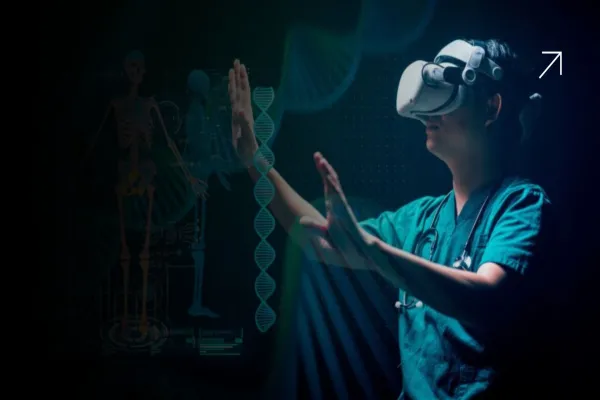For decades, medical education in pharma has meant one thing: slides. Decks for conferences. Decks for webinars. Decks for field reps to carry around on tablets. But here’s the truth: PowerPoint is no longer enough.
Doctors don’t need another static presentation. They need access to evidence, guidelines, and discussions that evolve as fast as clinical practice does. PowerPoint campaigns are one-off events. What pharma needs is continuity. That’s why the future of medical education campaigns is platform-driven, not PowerPoint.
Why PowerPoint campaigns fail today
The problem with slide-based education isn’t the format. It’s the mindset. A PowerPoint campaign assumes learning happens in a single event, including a webinar, a CME, a rep visit. But doctors don’t learn like that anymore. They’re busy, mobile-first, and constantly updating their knowledge from multiple sources.
A deck sent on email gets ignored. A webinar packed with 50 slides becomes white noise. What doctors want is always-on access, tailored to their specialty, in formats they can consume quickly.
PowerPoint campaigns die the day they’re delivered. Platform-driven education lives on, grows, and adapts.
What platform-driven education looks like
A platform-driven approach to medical education changes the equation. Instead of a one-way presentation, it becomes an interactive ecosystem.
- Modular content libraries: Evidence broken into digestible modules that doctors can access anytime.
- Multi-format delivery: Short videos, podcasts, infographics, and summaries alongside longer deep dives.
- Engagement tracking: See which specialties engage with what content, and adapt accordingly.
- Community features: Peer discussions, Q&A forums, expert AMAs, because education isn’t just content, it’s dialogue.
- Always-on updates: New guidelines, trial data, and therapy advancements uploaded in real time, not months later.
That’s not a deck. That’s a living, breathing medical education platform.
Why pharma needs this shift
For pharma, medical education is more than goodwill. It’s the foundation of trust. Doctors prescribe when they trust the science, understand the therapy, and feel supported by credible information.
But trust erodes when education feels like marketing. PowerPoint decks, rushed webinars, or one-time CMEs don’t cut it anymore. A platform-driven approach signals seriousness. It says: we’re here to partner with you in knowledge, not just pitch our brand.
That shift is critical in India’s competitive market, where every company claims to educate but few invest in systems that truly deliver.
The compliance dimension
Medical education also sits at the edge of compliance. Schedule H restrictions, UCPMP 2024, and global codes all limit how pharma communicates with doctors. PowerPoint decks in reps’ inboxes often slip outside approved workflows. That’s risk.
Platforms solve this. Centralized libraries ensure only approved content is used. Automated gating ensures only HCPs can access it. Audit trails prove compliance in real time. What was once a grey area becomes transparent, controlled, and safe.
A smart b2b healthcare marketing agency understands this: platform-driven education isn’t just about engagement. It’s about making compliance invisible.
Doctors want relevance, not repetition
Doctors today are digital natives. They learn on the go, curate their feeds, and expect relevance. They’re not rejecting education. They’re rejecting irrelevant formats.
A diabetologist may want weekly bite-sized updates on new molecules. An oncologist may prefer deep-dive trial analyses once a month. A GP in a Tier 2 town may need vernacular summaries and video explainers instead of dense PDFs.
PowerPoint treats them all the same. Platforms respect their differences.
The data advantage
There’s another benefit. Platforms don’t just deliver education; they generate insights. Which specialties engage more with what type of content? Which regions are lagging in awareness? Which therapy areas need more focus?
This data helps pharma refine education strategies, optimize spend, and link medical education to prescription impact. In a world where ROI matters, that’s game-changing.
PowerPoint gives you applause at the end of a webinar. Platforms give you continuous intelligence.
The role of the right partner
Most agencies can make decks. Some can design webinars. Very few can architect education platforms that combine content, technology, compliance, and analytics. That’s why the choice of partner matters.
A true b2b healthcare marketing agency won’t ask, “what slides do you need?” They’ll ask, “what education system do your doctors need, and how do we sustain it?” They’ll build for continuity, not campaigns. For compliance, not risk. For engagement, not vanity metrics.
The boardroom takeaway
Pharma leaders need to face a simple truth: PowerPoint campaigns are relics. They deliver activity, not impact. The future of medical education is platform-driven: modular, interactive, compliant, and data-rich.
For CXOs, the decision isn’t whether to invest in platforms. It’s whether to let competitors own that space first. Because once a doctor community trusts a platform, they stick with it. And trust, once lost, doesn’t return easily.
Medical education is not a slide deck. It’s a system. And the companies that embrace that shift will be the ones doctors turn to when it matters most.
If your medical education is still slide-based, you’re already behind. Let’s build a platform doctors actually choose to learn from.





